Few ordinary people know how to read barcodes placed by manufacturers on products purchased in stores. And even more so, determine the information encrypted in the barcode about the country of origin and some of the most significant parameters of the product. Let's talk about this.
First, what is a barcode? Barcode is graphic image numbers in the form of bars and spaces designed to be read automatic devices information contained in them. In the symbolism of a bar code, a person perceives only numbers that are understandable to him, placed under the graphic image.
Bar coding was invented and patented back in 1949 in the USA by Joe Woodland and Bernie Silver. This invention facilitated the accounting and control of material assets from the manufacturer to the consumer, i.e. throughout their progress. The most common today are the American Universal Product Code UPC and the European coding system EAN. The most popular today is the 13-bit European code EAN-13, introduced in 1977.
In Russia, two types of barcodes are used:
1. 13-bit European EAN coding system, which was introduced in 1986;
2. Barcode systems for payer settlement and payment documents.
What can a barcode tell those who know how to read or decipher it correctly? Deciphering a barcode is quite simple. A barcode symbol consists of a series of lines and spaces of varying thickness. They are divided into groups of lines and spaces that represent human-recognizable symbols.
1. The 13-bit EAN system barcode looks like the example below:
The numbers placed under the graphic image in the above barcode carry the following information:
1. two digits (sometimes there are three digits) - means the code of the country of origin, i.e. country code of the manufacturer or seller of the product. Typically, the country code is assigned by the International Association EAN and does not consist of a single digit;
2. five digits - mean the code of the enterprise - manufacturer or seller of products;
3. five digits are a product code, in which: 1st digit is the name of the product, 2nd digit is consumer properties, 3rd digit is dimensions, weight, 4th digit is ingredients, 5th digit is color;
4. one digit is a check digit used to check that the scanner is reading the strokes correctly.
5. Sometimes another number is indicated, which means the mark of the product manufactured under license.
Buyers are always interested in the country of origin of the product. To make it easier to navigate the country of origin of the goods, here are the codes of some countries:
|
|
569 - Iceland |
773 - Uruguay |
Barcoding allows you to computer network keep daily records of the balance of goods in the warehouse, in the sales area of stores, and daily sales volumes for all types of products. In addition, by installing special reading devices at the exit from the store’s sales area, you can control the removal of unpaid products.
2. Barcodes, which are affixed to payment documents (payment orders), provide the possibility of accelerated computer processing of the data contained in the payment document. Barcoding systems for payment documents are being intensively implemented by banks, tax authorities, energy and water supply enterprises, etc.
By introducing barcoding, banks provide their clients with programs that are designed to print a barcode on a payment document. The client provides the payment document equipped with a bar code and executed in the prescribed manner to the Bank for payment. The bank operations officer reads the barcode of the document with a scanner, rather than entering the payment document data manually. This technology speeds up the processing of payment documents and saves time for both the client and the bank.
Let's look at one example of barcodes for payment documents. This is a 28-bit barcode contained in the UPD (single payment document). It is necessary to ensure the possibility of computer processing of the data contained in the payment document and reading information through electronic data entry from the EPD form. The barcode is affixed to payment documents for payment of utility bills, electricity and taxes. individuals(transport, land, property).
It contains a graphic representation of 28 digital characters:
o10 characters - payer code;
o4 characters - the period for which the payment is made;
o7 characters - payment amount, taking into account voluntary insurance;
o7 characters - payment amount, excluding voluntary insurance.
To ensure the functioning of the system, the following details are included in the EPD:
oaccount for collecting payments for housing and communal services;
odetails of the bank accepting payments;
osurname, name, patronymic of the payer;
opayer's address;
othe period for which the payment is made;
opayer code, which is generated according to the following algorithm:
§ EEELLLLLLLK,
§ where E is the territory code (EIRC),
§ L - a unique code identifying the payer (personal account),
§ K - control number, the formation of which is carried out electronically;
ototal amount to be paid (including and excluding voluntary home insurance - at the choice of the payer).
The barcode is located outside the field of the payment document. In addition, it is enough for the Bank that the barcode is applied only to the first (signed) copy of the payment document.
What is a barcode and why is it needed? We all, more or less often, go through the cash register in a store to pay for the selected goods. And probably each of us at least once noticed how the cashier illuminates some stripes on the package with a beam from some device and only then names the amount of payment. You can also read on the Internet how you can buy a barcode and even google it easily online services to create barcodes!
The stripes are a barcode, and the device emitting the beams is a scanner. It reads the information from the barcode and transmits it to the cash register screen. The fact is that in large stores and supermarkets a list of goods with information about each of them is stored in the memory of a special computer.
Cash registers, which are also specialized computers, are connected to this computer. Each product is assigned a unique number encrypted in a barcode. The scanner reads this number from the barcode and transmits it to the main computer, which retrieves the product name and price from memory and transmits it to the cash register. Main computer also keeps records of sold and remaining goods. Therefore, we always find a barcode on the packaging of each product purchased in a store (on a bag, bottle, can, etc.).
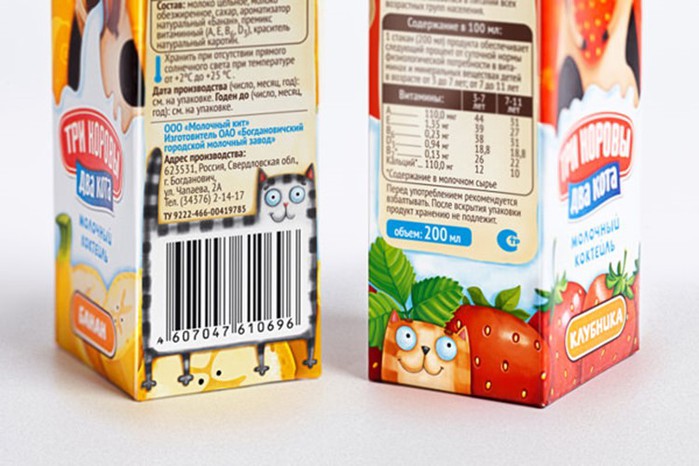
This is a kind of trademark intended for automatic reading. Each barcode is unique on a global scale and contains basic information about the product. The barcode forms a major part of automated identification technology.
Identification (from the Latin word identifico - to identify) is the identification of an unknown object by the coincidence of characteristics with a known object; This is the process of comparing an object with some standard. The word “code” itself suggests that the barcode encrypts information about an object (product, document, etc.). In Russia, mainly 2 types of barcodes are used: 13-bit codes of the European EAN system, introduced in 1986, and encoding systems for settlement and payment documents compatible with EAN. The barcode consists of a number of strokes-lines of varying thickness and spaces between them, and under this picture the numbers encrypted in the barcode in Arabic numerals are indicated. The EAN system encrypts 13 digits. The first 2 digits are the country code, the next 5 digits are the manufacturer or seller code, then 5 digits are the product code, and the last digit is a digit for checking the correctness of scanning. Bar coding was developed back in 1932, and patented in America in 1949 by D. Woodman and B. Silver.
Of all the methods of automatic identification, barcoding has gained the greatest popularity due to its simplicity and low cost of consumables - printing media, stickers and labels. A barcode is applied to transport and consumer packaging of domestic or imported mass-produced goods using a printing method or using adhesive (sewn on) labels, tags, etc. In most cases, the presence of a barcode on the packaging of a product is a prerequisite for its import and export, and the absence of a barcode can affect the competitiveness of products, their price, and makes it difficult or impossible to sell. Many trade organizations refuse to accept goods without a barcode.
The reason for the refusal is that the system for encoding and processing information about a product using a barcode is economically justified only if it covers at least 85% of goods or products. The use of a barcode, in addition to transmitting information and identifying an object, performs several more additional functions: - automatic identification using machine counting devices (mainly computers); - automation of control and accounting of inventory; operational management of the movement of goods - shipment, transportation, warehousing (labor productivity increases by 30% or more); - acceleration and improvement of customer service culture; - improving marketing research (i.e. market research).
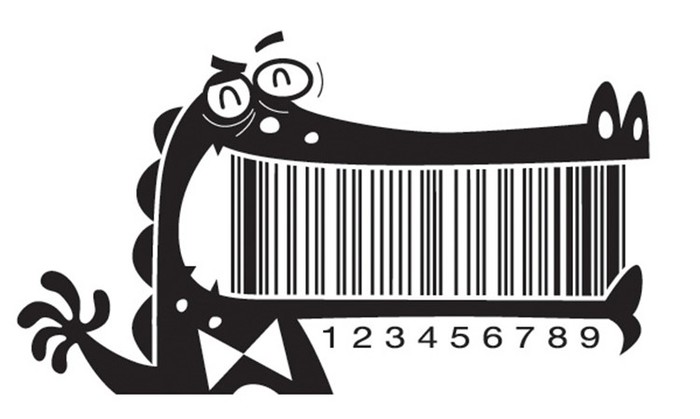
The possibility of mass use of barcodes especially increased when the rapid development of computerization and related information technologies, widespread introduction of computers in manufacturing, transportation and trade. There are several misconceptions about barcodes. The most common opinion is that the country of origin of the product can be determined by the first two or three digits of the barcode. In fact, these numbers only indicate national organization, in which the manufacturer was registered. For example, a Russian enterprise supplying goods to Norway can legally register there and use the number of this country in the barcode.
And you can register in several countries on the same basis. According to the second misconception, only the manufacturer of the product can apply a barcode. In fact, the right of first refusal belongs to the owner trademark(brand), then to the manufacturer, then to the supplier, if the previous persons or organizations for some reason did not want to be marked with a barcode. For example, bottles of Coca-Cola produced in the Moscow region and sold in Moscow have a Belgian barcode belonging to the owner of the recipe. The third misconception is that using a barcode you can find out about the consumer properties of a product - style, color, size, expiration date, etc. There is nothing like that. All such information is stored in the manufacturer’s electronic catalog, to which buyers do not have access.
And as a “bonus” - designer barcodes.
A familiar barcode image can be a great marketing ploy! It’s just that familiar images need to be presented in an unusual way. The selection includes several images of creative barcodes from the Japanese corporation D-barcode, from the studios vanity barcodes, bar code revolution and others.
Undoubtedly, creative barcodes are great way increase brand value and thus attract the attention of customers!
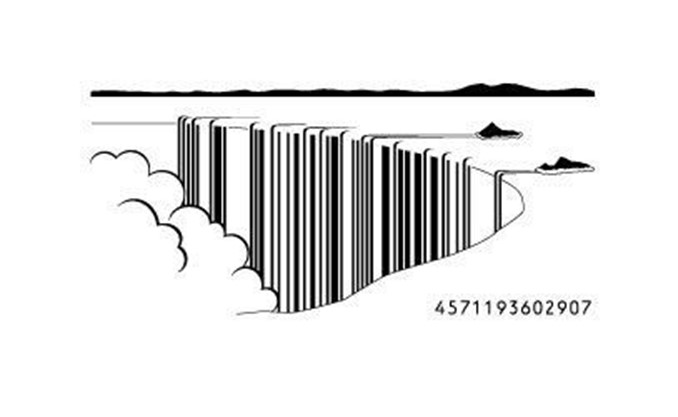
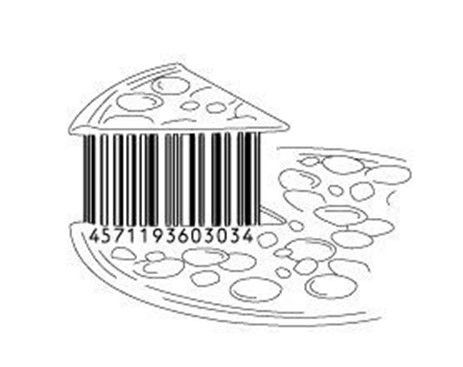
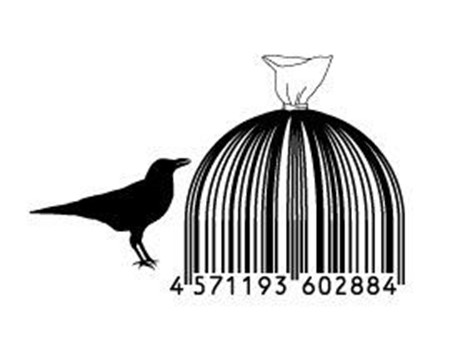

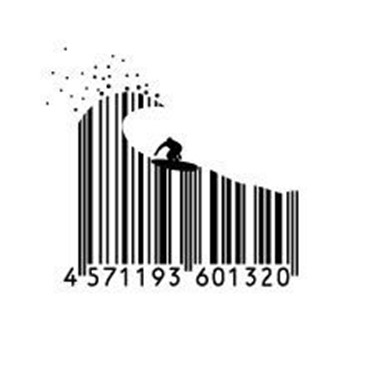

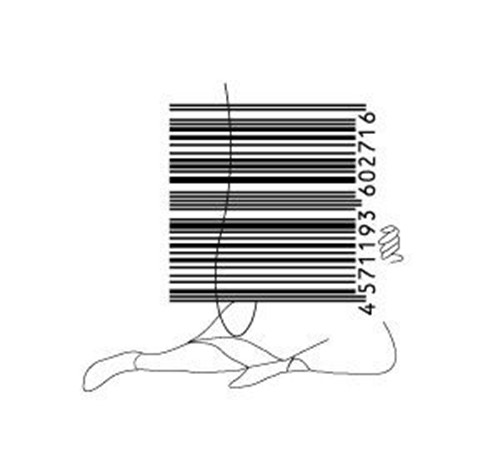


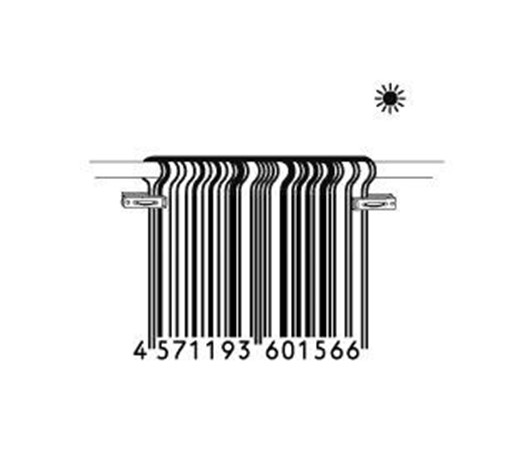
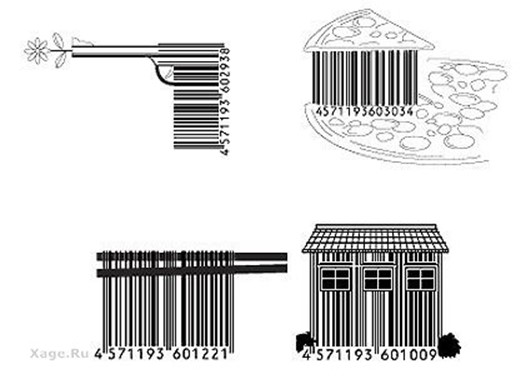

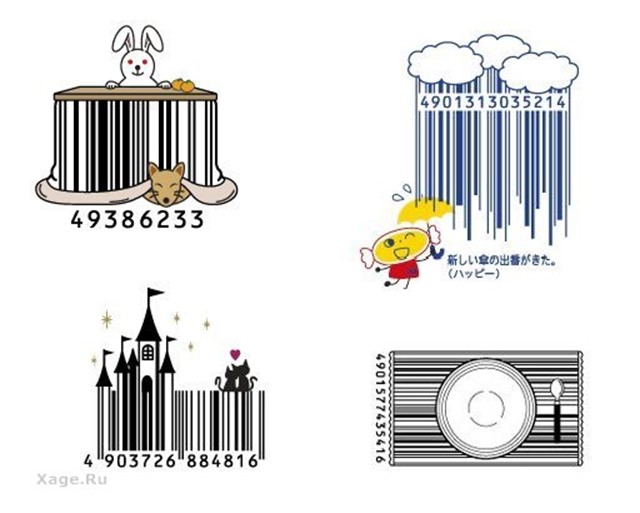

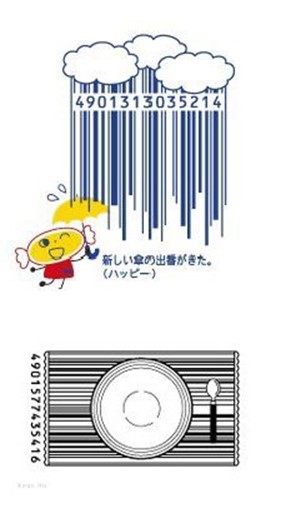
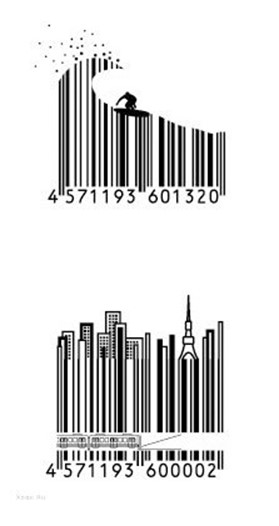

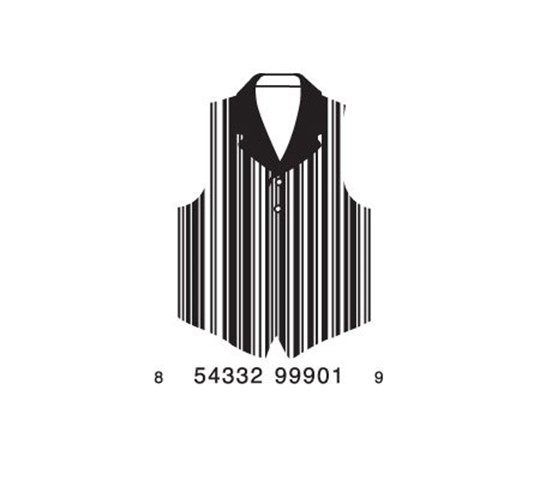
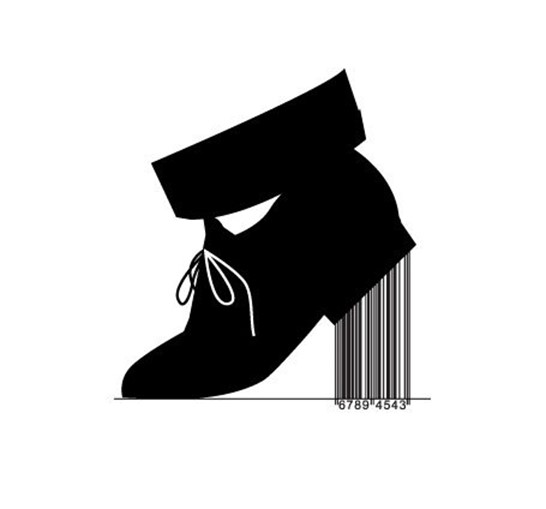
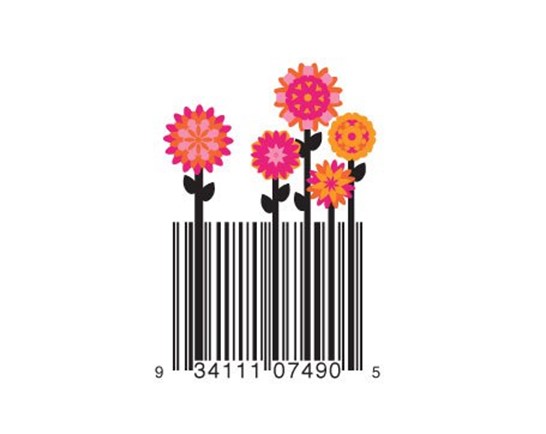

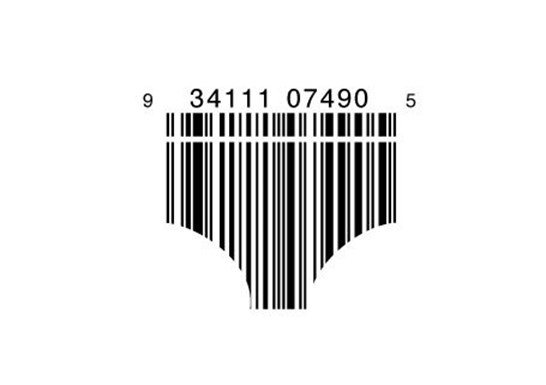
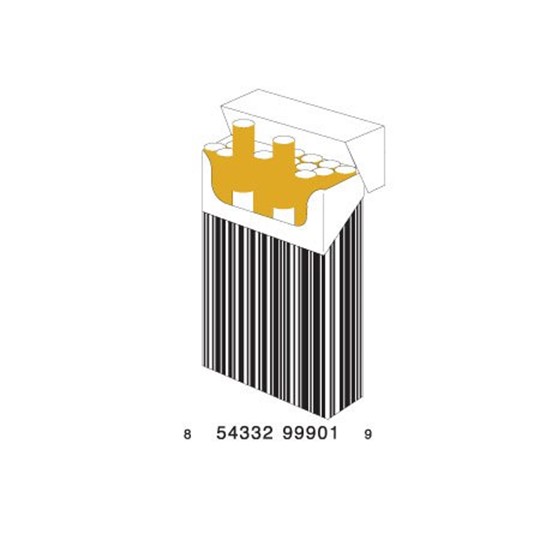
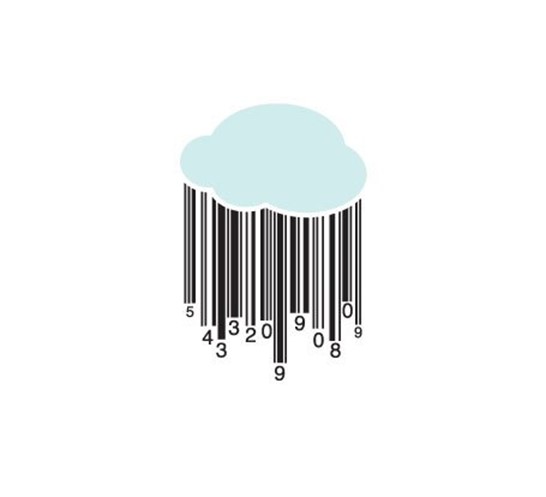
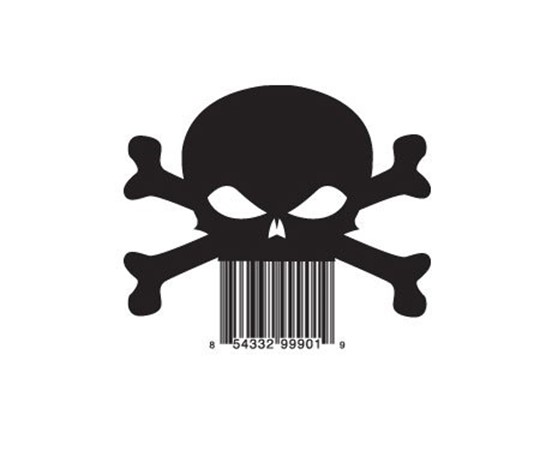
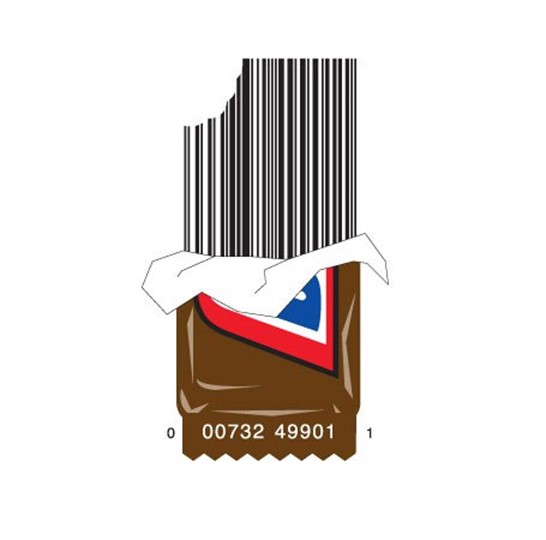
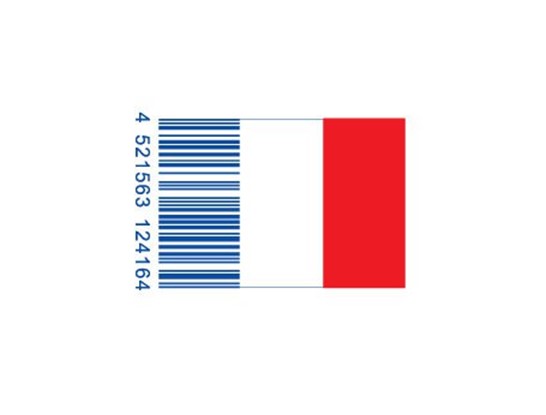
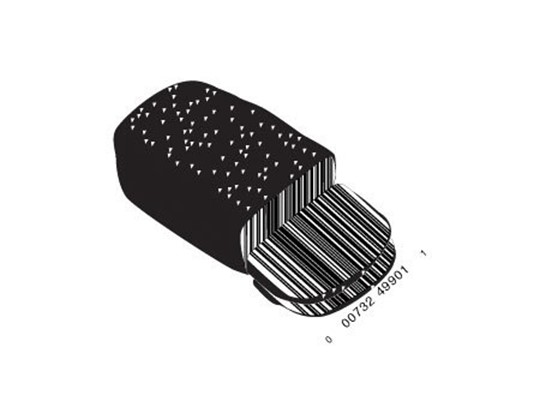
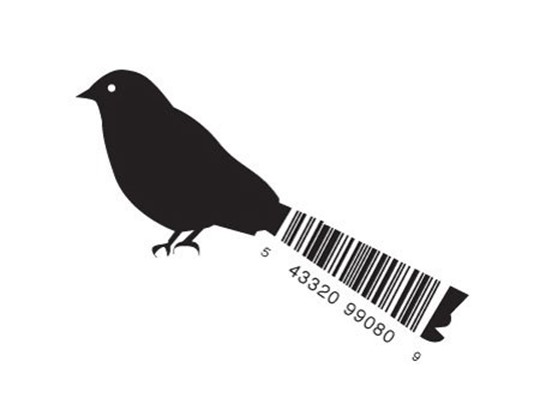
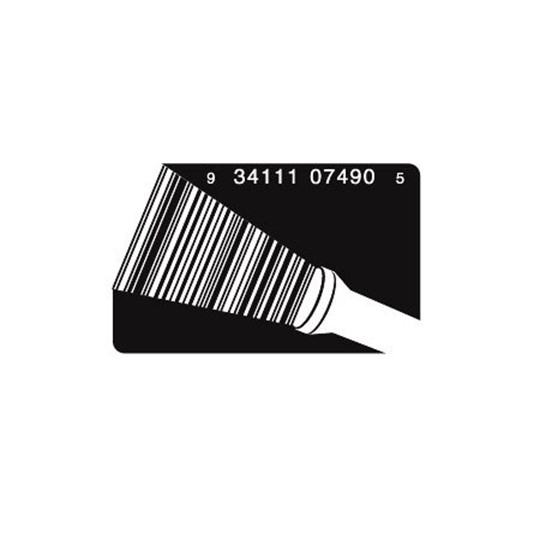


![]()
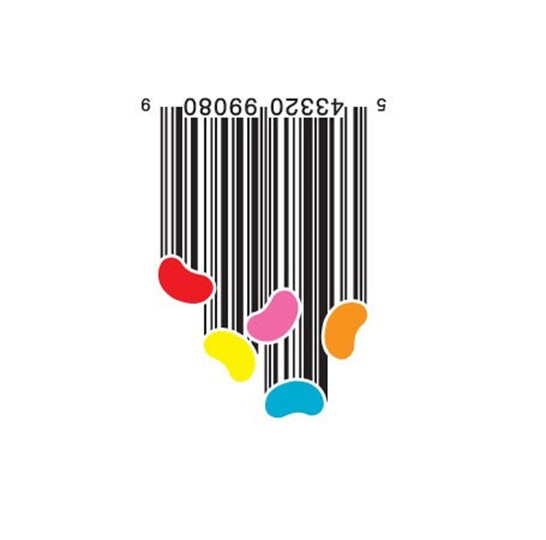
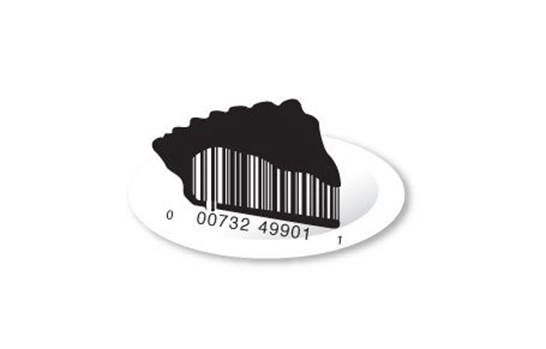
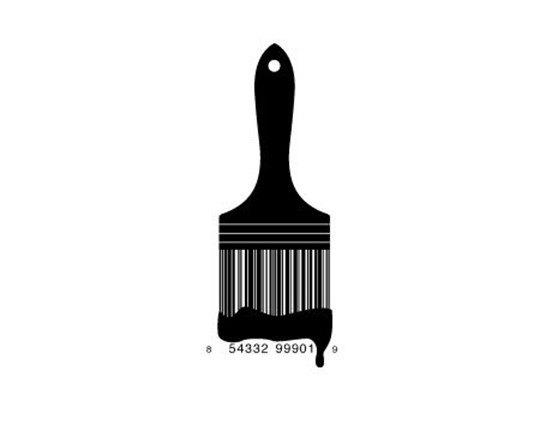

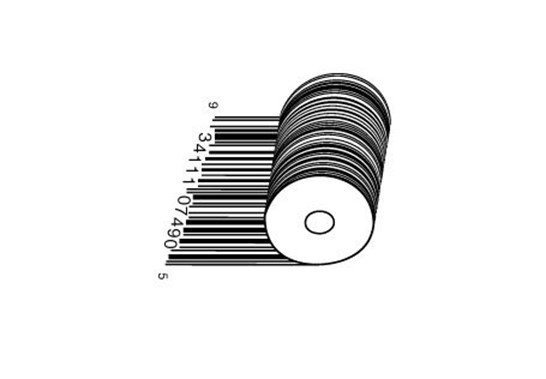
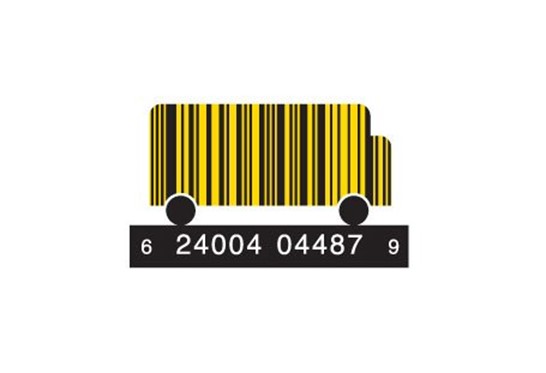


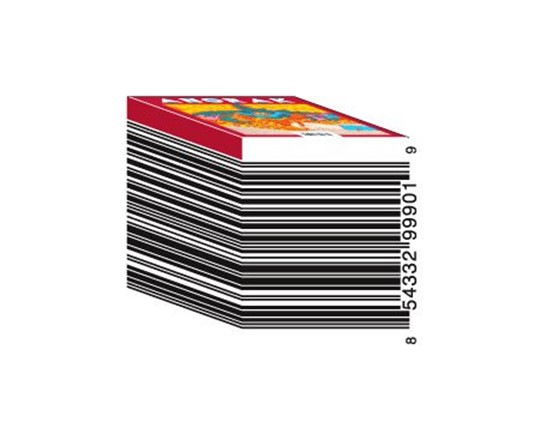



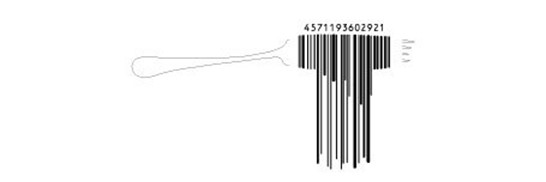





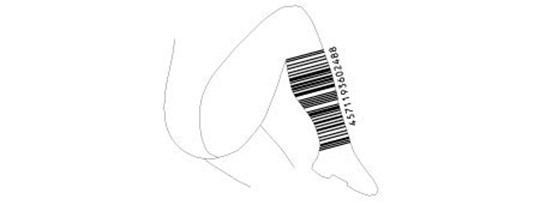





11.12.2009
And why is it needed?
Dear editors! I kindly ask you to decipher the attached information - it is available on all products. I turned to five friends, but no one could explain this “rebus” to me. Ivan Vasilyevich TOLKAN, pensioner.
G. Chisinau, blvd. Dacia".
Ivan Vasilyevich, this “rebus” is nothing more than. We hope that the material published below will help you, as well as many other NM readers, to fill the gap in this area.
What is a barcode and why is it needed?
Few ordinary people know how to read barcodes placed by manufacturers on products purchased in stores. And even more so, determine the information encrypted in the barcode about the country of origin and some of the most significant parameters of the product. Let's talk about this.
First, what is it? This is a graphic representation of numbers in the form of bars and spaces, intended for automatic devices to read the information contained in them. In the symbolism of a bar code, a person perceives only numbers that are understandable to him, placed under the graphic image.
Bar coding was invented and patented back in 1949 in the USA by Joe Woodland and Bernie Silver. This invention facilitated the accounting and control of material assets from the manufacturer to the consumer, i.e. throughout their progress. The most common today are the American Universal Product Code UPC and the European coding system EAN. The most popular today is the 13-bit European code EAN-13, introduced in 1977.
In Russia, two types of barcodes are used:
1. 13-bit European EAN coding system, which was introduced in 1986.
2. Barcoding systems for payer settlement and payment documents.
What can a barcode tell those who know how to read or decipher it correctly? Deciphering the barcode is quite simple. A barcode symbol consists of a series of lines and spaces of varying thickness. They are divided into groups of lines and spaces, which represent human-recognizable symbols.
A 13-digit EAN barcode looks like the example below: The numbers below the graphic in the barcode below provide the following information:
1. Two digits (sometimes three digits) - indicate the code of the country of origin, i.e. country code of the manufacturer or seller of the product. As a rule, the country code is assigned by the International Association EAN and does not consist of one digit.
2. Five digits indicate the code of the manufacturer or seller of the product.
3. Five digits are a product code, in which: 1 - product name, 2 - consumer properties, 3 - dimensions, weight, 4th digit - ingredients, 5 - color.
4. One digit is a check digit used to check that the scanner is reading strokes correctly.
5. Sometimes another number is indicated, which means the mark of the product manufactured under license.
Buyers are always interested in the country of origin of products. To make it easier to navigate the country of origin of the goods, here are the codes of some countries:
Barcoding allows, through a computer network, to keep daily records of the balance of goods in the warehouse, in the sales area of stores and the volume of daily sales in the context of all types of products. In addition, by installing special reading devices at the exit from the sales area, you can control the removal of unpaid products.
2. Barcodes, which are affixed to payment documents (payment orders), provide the possibility of accelerated computer processing of the data contained in the payment document. Barcoding systems for payment documents are being intensively implemented by banks, tax authorities, energy and water supply enterprises, etc.
By introducing barcoding, banks provide their clients with programs that are designed to print a barcode on a payment document. The client submits a payment document equipped with a bar code and executed in accordance with the established procedure to the bank for payment. The bank operations officer reads the barcode of the document with a scanner, rather than entering the payment document data manually. This technology speeds up the processing of payment documents and saves time for both the client and the bank.
Let's look at one example of barcodes for payment documents. This is a 28-bit barcode contained in the UDP (single payment document). It is necessary to ensure the possibility of computer processing of the data contained in the payment document and reading information through electronic data entry from the EPD form. The barcode is affixed to payment documents for payment of utility bills, electricity and taxes of individuals (transport, land, property).
It contains a graphic image of 28 digital characters: 10 characters - payer code; 4 characters - the period for which the payment is made; 7 characters - payment amount taking into account voluntary insurance; 7 characters - payment amount excluding voluntary insurance.
To ensure the functioning of the system, the following details are included in the EPD: an account for collecting payments for housing and communal services; details of the bank accepting payments; surname, name, patronymic of the payer; payer's address; the period for which the payment is made; payer code, which is generated according to the following algorithm:
* EEELLLLLLK, where E is the territory code (EIRC), L is a unique code identifying the payer (personal account), K is a control number, the formation of which is carried out electronically;
* total amount to be paid (including and excluding voluntary home insurance - at the choice of the payer).
The barcode is located outside the field of the payment document. In addition, it is enough for the bank that the barcode is applied only to the first (signed) copy of the payment document.
Barcodes of manufacturing countries
00-09 - USA and Canada
30-37 - France
380 - Bulgaria
383 - Slovenia
385 - Croatia
400-440 - Germany
460-469 - Russia and b. USSR
4605 - Latvia
471 - Taiwan
489 - Hong Kong
45, 49 - Japan
50 - UK
520 - Greece
529 - Cyprus
535 - Malta
539 - Ireland
54 - Belgium and Luxembourg
560 - Portugal
569 - Iceland
57 - Denmark
590 - Poland
599 - Hungary
600-601 - South Africa
619 - Tunisia
64 - Finland
690 - China
70 - Norway
729 - Israel
73 - Sweden
740-745 - Guatemala, El Salvador, Honduras, Nicaragua, Costa Rica, Panama
750 - Mexico
759 - Venezuela
76 - Switzerland
770 - Colombia 773 - Uruguay
775 - Peru
779 - Argentina
780 - Chile
786 - Ecuador
789 - Brazil
80-83 - Italy
84 - Spain
850 - Cuba
859 - Czech Republic and Slovakia
860 - Yugoslavia
869 - Türkiye
87 - Netherlands
880 - South Korea
885 - Thailand
888 - Singapore
90-91 - New Zealand
A bar code is a symbolic key to information in databases. Barcodes allow you to quickly, easily and most importantly accurately read and transmit information about those items that need tracking and control. The first barcodes in retail outlets, movement control, inventory control, determined the emergence of broader applications, for example, time tracking, workflow control, quality control, sorting, document movement, receiving and transporting goods, access to secret areas, as well as many other applications. Automatic identification automatically recognizes, decrypts, processes, transmits and records information, mostly by applying and reading information encoded in a barcode.
One of the most common technologies for automated data collection (automatic identification - AI) today is barcoding.
The following main stages can be distinguished in barcoding technology:
1. Creating a barcode using a special software.
2. Labeling the product with a bar code (many products already have a printed bar code on their packaging).
3. Barcode reading (obtaining data encoded in a barcode).
Automatic identification automatically recognizes, decrypts, processes, transmits and records information, mostly by applying and reading information encoded in a barcode.
Barcodes allow you to quickly, easily and most importantly accurately read and transmit information about those items that need tracking and control. Labels with barcodes are very easy to stick to almost any surface, and can also be applied directly to tubes, envelopes, boxes, bottles, packaging, books, furniture, cards and many other items that need identification.

Bar code consists of rectangular bars and spaces of variable width. Encoding in bar codes occurs by changing the width and location of bars and spaces that represent numbers and, in some cases, characters. When a light source moves through them, changes in the amount of reflected light are recorded, and the image thus obtained is converted into alphanumeric characters, which, in fact, are encoded in the form of a bar code. The resulting code is compared in a computer with existing codes in the database to determine what information it matches. In supermarkets, for example, this information might indicate the weight or price of an item; during transportation, it would be possible to encode the sender and destination, information about the product, such as: batch number, expiration date, etc.
In other words, bar code- a symbolic key to information in databases. The only information it carries is simply a series of numbers and/or symbols. Its purpose is to uniquely link information stored within a computer system that can be automatically retrieved quickly, easily and accurately from a database.

To form barcode There are a number of "languages" called symbologies that use different combinations of bar and space widths to encode data characters. The benefits of one symbology over another depend on the specific application.
Naturally, the world does not stand still. Due to the need to encode increasing amounts of information, barcoding technology has evolved into multi-dimensional and matrix symbologies that can encode large amounts of data in a smaller area. Examples of such symbologies include PDF-417, MaxiCode, DataMatrix, GS1 DataBar, Composite, etc.
The most widespread among linear (arranged in one row) codes are the following symbols:

EAN

Interleaved 2 of 5 (ITF)


To effectively record the movement of goods in an organization, a technology is needed that allows you to assign a unique code to each product and ensure quick reading of the code with minimal errors. It is precisely these conditions that the technology of barcoding of goods, which has been successfully used by Western companies for a long time, satisfies.
This technology is based on various graphical representations of codes, providing not only human-readable code forms, but also formats designed to be read by special devices - barcode scanners.
At the moment, there are about 20 barcode formats (including modifications), differing mainly in areas of application. Each barcode (symbol) is designed to optimize the following parameters:
- High information density, or a high resolution. Very small codes can be printed and used on products where mounting space is limited, such as printed circuit boards.
- Optimal location data when the possibility of reading errors is almost zero. This is very important for barcode applications in medicine.
- Ease of decryption. Some barcodes use simple encoding technology and are widely supported by scanner manufacturers.
Barcodes, such as those used in retail, have precisely defined data content. They are structured for convenience large quantity users. Some barcodes are designed to support a significant number of character sets, while others only support digital data.
Some formats have a mechanism for checking correctness, which consists of calculating one part of the code from another.
In Russia, the formats mainly used are EAN-13 (EAN-8) for application to goods and ITF for use on transport packaging. On imported goods you can also find barcodes in the format UPC, common in the USA.
One of the main components of this technology is the use of barcode scanners. Barcode scanners differ both in the way they connect to a computer and in their capabilities. At the moment, almost all manufactured scanners are capable of reading the most popular code formats, including EAN-13 (EAN-8), UPC A, UPC E, ITF, Code 39, ISBN.
When reading, scanners automatically parse the scanned code, check its correctness and can different ways modify the code (for example, convert from one format to another).
As a result, scanners produce a string of characters, representing the barcode in a human-readable form. Based on the connection method, scanners are divided into those connected to the computer’s COM port or to the keyboard. In the latter case, the scanner imitates the operation of a keyboard and, as a result, it is necessary to add Special symbols in case it is necessary to distinguish barcode entry from simple typing on the keyboard.
Barcoding technology implies a unique barcode for each product, so centralized distribution of barcodes is necessary. To solve this problem, the international non-profit and non-governmental organization EAN International was created in 1977, the representative of which in Russia is the “Association of Automatic Identification UNISKAN/EAN Russia”. By registering in advance with this association, a manufacturer can receive barcodes for all products it produces.
EAN-13 codes issued in Russia have prefixes (the first few digits) 460-469. Prefixes 20-29 are allocated for so-called internal codes - an enterprise may not register codes with such prefixes and freely use them for internal control (for example, applied to equipment for subsequent inventory). All necessary information about code formats and registration rules can be found on the Uniscan/EAN WWW server - www.ean.ru
After receiving the barcode, it must be applied to the product. There are several possible options for applying barcodes to goods - from printing (for example, on books) to manually gluing adhesive labels (for example, when packaging goods). You can print barcodes on adhesive labels using a regular laser printer or a specialized printer for printing labels. If you need to apply a barcode to a weighted item, you can use scales with a built-in label printer.
General requirements for barcode application
In the composition being developed, the image elements must meet the following requirements:
- Individual points with a diameter of at least 0.3 mm
- Fine lines with a thickness of at least 0.25 mm
- The closed frame in the form of a thin line should have a thickness of 2-3 times the minimum thickness to reduce abrasive wear of the line printed across the printing direction.
- In the composition, you should avoid combining large spot fields and small image elements of the same color, text printed inside out in a font smaller than 3 mm.
- When printing small fonts, it is advisable to use monospaced fonts.
- The distance between the beginning of the printed elements and the edge of the printed material (film, bag) must be at least 10 mm, i.e. printing with margins that bleed out is not allowed.
When reading a bar code, the scanner reacts to alternating dark and light fields, so the contrast between bars and spaces must be sufficient for it to work. Since the scanner's laser beam is red, it "sees" colors the same way as a person wearing red glasses.
As a rule, dark inks (black, brown, green, blue) are used to print a bar code on a light background (white, yellow, orange). In this case, you need to choose paints of those colors that are already on the packaging and provided for in the design, observing the contrast requirements. It is unacceptable to compose code strips from different colors. Ideally, the printed strokes of a bar code symbol should be completely black, and the field on which they are printed should be perfectly white. In this case, the highest contrast is ensured.
If you follow the basic rules of color, contrast, and image, you can create readable bar codes any colors and on any type of packaging material. Below are the color combinations of bar codes that can and cannot be read by a scanner.

If the stroke is the same color as the background, then the color can be black, purple, blue, subject to the rule of background optical density less than 0.12.
When printing, avoid using specularly reflective materials to create backgrounds or strokes. It is not recommended to use varnish as a background.
When placing a code on a label, film, bag, you must first of all adhere to the following rule: “The direction of movement of the label, film, bag when printing must be parallel to the code strokes.”
NOMINAL DIMENSIONS OF THE EAN-13 BARCODE SYMBOL (IN ACCORDANCE WITH GOST R 51201-98):
- character width - 37.29 mm;
- symbol height - 26.26 mm;
- stroke height - 22.85 mm;
- minimum free zone above and below the strokes - 0.33 mm (or 1X);
- the minimum free zone to the left of the strokes is 3.63 mm (or 11X);
- the minimum free zone to the right of the strokes is 2.31 mm (or 7X);
- the strokes forming the left and right limit signs, as well as the central limit sign, must be extended DOWN by 1.65 mm (or 5X). It is possible to either proportionally increase the standard EAN symbol from a factor of 1.0 to 2.0, or decrease it to a factor of 0.8.
First of all, let's dispel a few myths that have developed around barcodes:
- this is not a guarantee of authenticity;
- there is no information about the environmental friendliness of the product;
- There is also no indication of price.
Benefits of Barcodes
Since the advent of barcodes, information entry has become more accurate and faster, and accordingly, all processes associated with information processing have become faster and more accurate. It will take quite a lot of time to find out the purpose or current status of a particular job, tools, materials or any moving item. Barcodes help track the movement of goods and, thanks to this, allow you to save time, quickly respond to requests and respond to any changes.
A barcode system offers amazing benefits for any type of business.
With the help of barcodes, the collection and recording of information becomes faster and more accurate processes, which allows us to reduce prices, reduce the likelihood of errors to zero, and simplify all trade processes.
Save time
Depending on the application of barcodes, time saving can be very different. In most cases, the most dramatic moment in retail warehouses is the inventory count. One merchant will need 25 employees working around the clock to carry out inventory for six months. With barcodes you only need 4 workers and 5 hours of work. Even in routine, everyday work, the time savings from using barcodes increases productivity. Imagine a shipment of 10 cardboard boxes. Recording codes and serial numbers will take approximately 2 minutes compared to the 10-20 seconds it takes to scan barcodes. With the help of barcodes located on each item of goods, as well as a scanner, inventory becomes a matter of minutes. In constant work and busy mode, this can be a significant time saver.
Barcodes allow for accurate inventory counting in real time. This enables companies to monitor inventory levels and thereby reduce unnecessary costs. The use of barcodes also reduces the time required to prepare annual inventory reports. So-called “rolling inventories” can be carried out in real time. Within an hour, without interrupting store operations, an inventory of selected items is carried out. Thanks to this, you always know how much of a particular product is in the warehouse, how much is in the hall, how much has been sold. It is easier to plan the receipt of goods, as well as statistically identify the relationship between the sales activity of a particular product and any factors: weather, time of day, day of the week, etc.
Reducing errors
Errors that occur when manually entering information can cause significant costs and problems: too high prices, unhappy customers, and time spent resolving these problems. Errors of this kind can lead to the loss of a significant part of the profit or even deprive the enterprise or company of all profit. Thanks to barcodes, the arrival of goods is carried out using scanners, so the very concept of “data entry” is absent.
In some situations, manual data errors can have a more dramatic outcome: imagine the importance of accurate data in the blood data bank process. Typical error rate manual entry data is considered to be 1 error per 300 hits. Barcode scanners are more accurate in this regard, level possible errors when running a scanner it comes down to one error in 36 trillion, but this also depends on the type of scanner.
Point-of-Sale

Point-of-sale is the most common and familiar use of barcodes, and there is hardly a person who has never seen a cashier read a barcode from a product.
The advantages of using barcodes in trade are as follows:
- barcodes allow medium and large stores to reduce customer service time;
- correctly applied and readable barcodes allow visitors to quickly pay for purchased goods;
- instant access to inventory information in real time allows you to significantly speed up all trading processes;
- bar codes allow you to immediately place an order for certain goods based on “rolling inventories”;
- Using barcodes, you can answer not only the question of what the visitor bought, but also when he bought it and in what combination. Barcodes allow you to fully automate all processes: from goods acceptance to cash registers;
- The cashier sometimes doesn’t even see the goods. He runs a scanner over it and all the information from the database appears on the cash register monitor, as well as on the printed receipt. The possibility of deceiving the buyer is completely excluded, since the amounts are taken by computer from the database;
- the possibility of permanent accounting of goods and implementation of accounting policies. Research conducted by some stores makes it possible to analyze at what hours and which days of the week this or that product is best sold, and accordingly organize the supply of goods from the warehouse to the sales floor.
Automatic identification
Today, the competitiveness and profitability of a business increasingly depends on how quickly and efficiently data on business processes reaches managers who make management decisions. Truly high management efficiency can only be achieved by those companies that use modern information technologies and organize a closed cycle of data transfer via information channels. Such companies stand out from competitors due to High Quality management and the ability to make quick and effective decisions based on information available at any time.
The advent of automatic identification systems has significantly increased the speed, efficiency and accuracy of information processing and collection.
The first barcodes in retail outlets, movement control, inventory control, determined the emergence of broader applications, for example, time tracking, workflow control, quality control, sorting, document movement, receiving and transporting goods, access to secret areas, as well as many other applications.
The introduction of information technology does not just mean the presence of a computer control system, it also means the presence of digital devices at the points of primary information collection, designed to facilitate information entry, reduce the number of manual operations and minimize the number of errors when entering data.
Among the many tasks associated with the primary collection of information, one can highlight the automatic identification (recognition and discrimination) of heterogeneous objects (goods, inventory, luggage, documents, etc.).
Its solution involves performing the following steps: assigning each item a specific identifier (number or code), applying a specialized tag containing the identifier to the item, reading data from the tag with a digital device and converting the tag data into electronic form.
Graphic, magnetic, radio frequency and electronic tags can be used as an identifier. All of them are designed for automatic identification and are used in various fields, but the most popular is the graphic mark in the form of a barcode.
Why has the barcode become so popular?
Of the available automatic identification technologies, barcoding technology and barcode tag have gained the most popularity. First of all, this is due to the simplicity of this technology and the low cost of consumables: applying a barcode to a label or packaging is much cheaper than applying magnetic, radio frequency and electronic tags. If the barcode is applied by printing, then this does not affect the cost of packaging, but if the barcode is printed on a self-adhesive label, then the cost of packaging increases slightly. It should be borne in mind that every year more and more manufacturers themselves take care of applying a barcode to the packaging, and the number of products marked with barcode also increases, which naturally reduces the cost of self-labeling.
The barcode printed on the packaging can be read with a special device. Most often, barcode scanners are used for these purposes (you can see them at the cashiers’ workplaces in many modern stores). To read a barcode using a scanner, direct contact with the barcode itself is not necessary: the maximum reading distance can vary depending on the scanner model from 20 to 300 mm (industrial scanners can read from a greater distance). The scanner recognizes and reads the barcode, converts the barcode data into electronic form and transmits it to a cash register, PC or POS system for further processing.
Why has a barcode become a requirement?
A barcode printed on a product package has no value in itself. It is useful only where a full exchange of data is organized between points of sale and management computer system. If such a system exists at a trading enterprise and most products have a bar code, then everyone benefits from this: sellers, buyers, and management personnel. Sellers - by reducing the number of manual operations and, as a result, increasing the speed of work and reducing the number of errors. Buyers - due to an improved level of service (now they do not need to linger for a long time where they have to part with money). Management personnel - due to prompt receipt of information on sales and inventories of various types of goods and the ability to make timely decisions on replenishing stocks of certain types of goods.
Trade enterprises with a high flow of customers and large sales volumes oblige product suppliers to mark each delivered product with its own barcode.
"UNISKAN/GS1 RUS"; GC "Leader"
